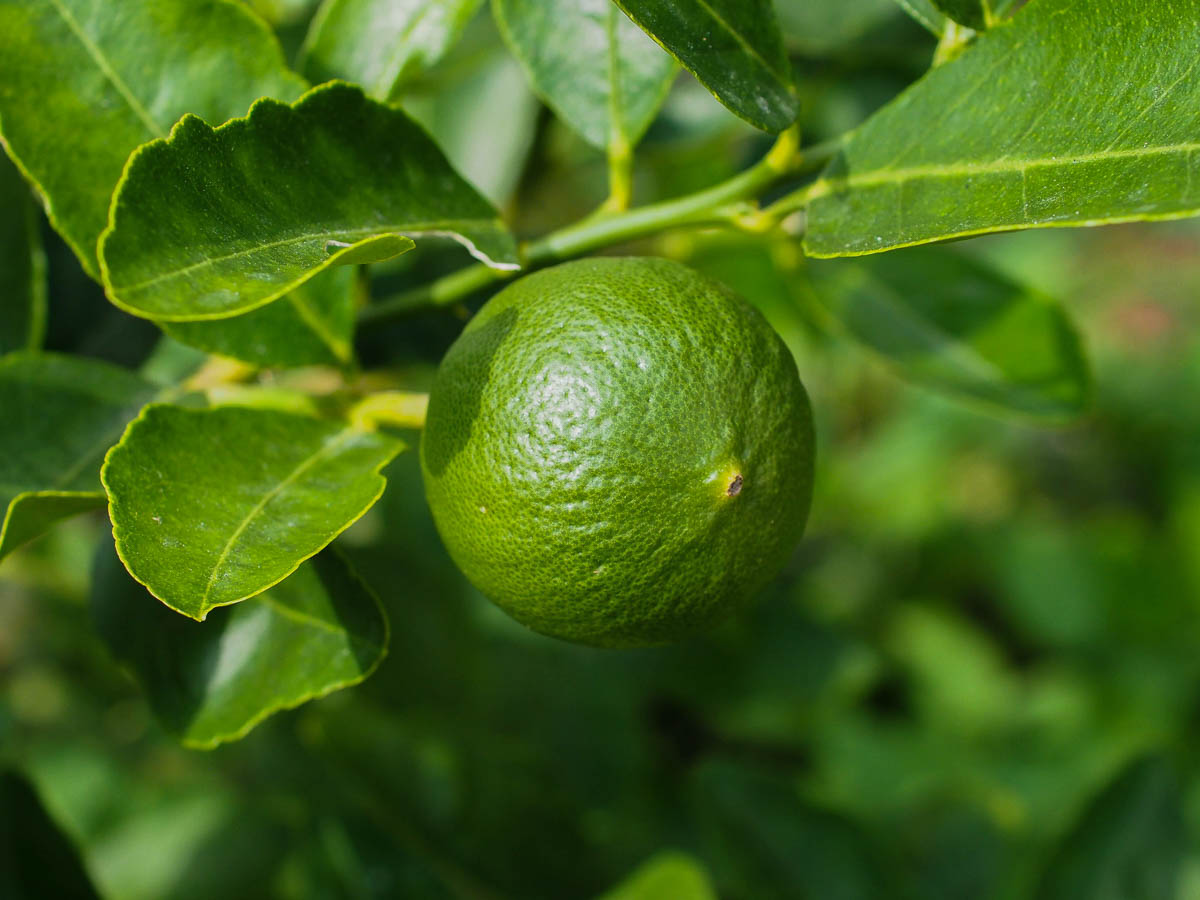Lime
Lime (Citrus × aurantiifolia)
Other common names: Limau, Limau Asam, Mexican Lime, 来檬

Lime trees are a staple fruit tree in many tropical kitchen gardens, with the fruit juice used as flavouring for a wide range of dishes, drinks and desserts.
As a perennial tree, it is a common sight in edible gardens, and is usually grown in true ground or large pots as a medium- or large-sized bush.
The plant is part of the citrus family, which also includes Limau Purut. All citrus plants are host plants for the lime butterfly, and can be part of the planting palette for gardens.
Sun and soil needs:
.jpg)
This tree does best in full sun gardens with a minimum of 6 hours of sunlight. They can be grown in 4-6 hours of direct sunlight or 6 hours of indirect sunlight, but the plants may be small and produce less fruits.
Plants do best in pots with loamy soil at least 30cm deep, or in true ground. These plants are vulnerable to root rot, so ensure that your pots drain well, and that your soil has plenty of organic matter to let the roots breathe.
This tree can grow up to 6m high, and usually has a broad crown. Many gardeners maintain this plant as a large bush, and regularly prune it down to around 1 or 1.5m for easy harvesting.
Sowing seeds:
Seeds can be sown directly into pots or the ground. Because the plant eventually grows into a tree, it is easier to grow a few seedlings in separate pots before selecting the healthiest one to be grown in true ground.
The seedlings are generally resilient to most environmental factors but may be vulnerable to being eaten by snails or birds. Protect your young plants with a DIY cloche or netting.
Growing:
Lime trees are are steady growers but do benefit from being fed high potassium and phosphorus fertilisers once every two months after its first flower to encourage flowering and thus fruiting. Regular pruning to promote airflow will keep the plant healthy and neat.
The tree will need to be around 5 years old before it starts producing fruit.
Harvesting:
Ripe fruits will smell strongly of zest, and will be a bright green colour. Seeds can be harvested from ripe fruit for immediate planting.
Propagation:
This tree is grown via seed, or via woody cuttings with rooting hormone. This tree can also be grafted.
Common problems & solutions:
If your plant has few to no flowers, you can fertilise the plant with fertilisers high in phosphorus and potassium. These nutrients encourage root and flower growth, which are important for the plant to produce more fruit.
Many plants require pollinators to help them fruit. Bees, butterflies, birds and even beetles transport pollen from one flower to another, pollinating your crops and increasing their fruit yield. Attract some pollinators to your garden by growing pollinator-attracting crops.
Aphids, Mealy Bugs, Scale Insects, and Whiteflies often infest the plant if it has underlying problems like repeated wilting from heat stress. Mechanical pest control methods like pruning the infested parts are the best methods for managing these pests in the short term, but resolving the underlying problem will prevent them in the long term.

